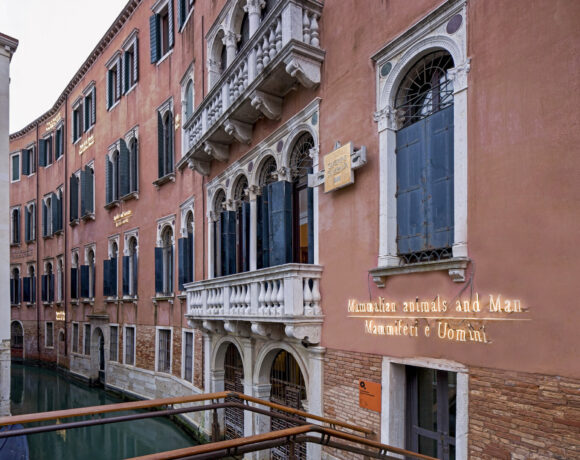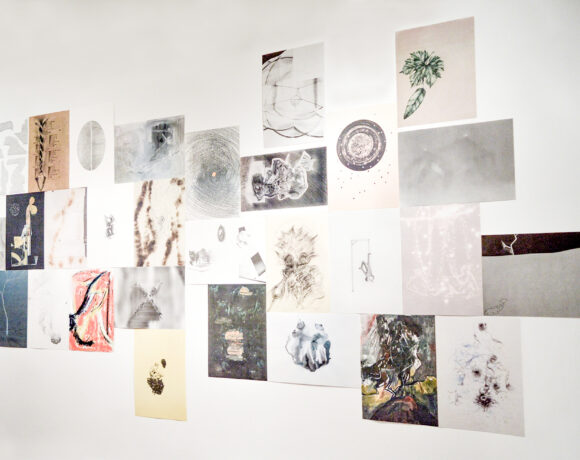That street art (or, better, urban muralism if one wants to avoid a definition now too tied to its rigorously illegal and rebellious beginnings) has fully entered the debate and the contemporary art system is now an established fact. Galleries specialized in representing artists who owe their fame to this field have sprung up all over the world and public commissions are swarming, usually associated with an ambiguous intent of “aesthetic redevelopment” of degraded urban areas, and private ones, in most cases the expression of precise communication strategies of brands that want to be nonconformist and disruptive. It is difficult to orient oneself in this osmotic panorama and certainly anachronistic to embrace the ultra-conservative positions of those who stigmatize the interference of the market as an irremediable distortion of the constitutive reason for being of this expressive modality, which like the others, in order to remain vital, must change according to the era of which it is a manifestation.

Guido Bisagni and Domenico Russo at VLNV, Piemonte, photo Matteo Castigliano CT
Even deciding to suspend judgment on the undeniable contradictions inherent in the issues mentioned so far, the impression is that something important is missing, especially from the point of view of the historical-critical treatment of this new transversal phase of urban art, compared to which the most usual approaches are equally ineffective, namely the already dated one of countercultural anecdotes and the more recent one that evaluates the artists’ curriculum with the same parameters used to systematize the more traditional creative careers. Domenico Russo’s latest book published by Silvana Editoriale, which retraces the story of the writer Guido Bisagni (Alessandria, 1978), internationally known under the pseudonym 108, occupies an interesting seminal position on this theme. The publication highlights the evolution and specificities of the artist’s poetics through a rich iconographic apparatus that underlines the constant parallelism between spontaneous mural works and works on paper and canvas intended for the commercial circuit, the reading of which is entrusted to an extensive unpublished introduction by the curator and an appendix of texts published over the years in trade magazines that testify to the intensification of their intellectual relationship. Wanting to leave readers the pleasure of immersing themselves in the fascinating world of 108 through Russo’s words, we have consulted him without summarizing the contents to delve into the reasons for this book and the particular critical register that constitutes its soul.

Guido Bisagni, “La Fisica”, 2016, mixed media on canvas, installation view at Forze della Natura show, Ca’ Dei Ricchi, Treviso, courtesy of the artist
Emanuela Zanon: How did your interest in 108 come about? What aspects of his painting intrigue you the most?
Domenico Russo: I met Guido Bisagni and his work in 2012, but it was in 2016 that I saw “The 43 Forms of Chaos”, along the bus station in Bologna. A work that struck me deeply, for its audacity and dark expressive force. I found this artist brave and bold, who scattered that long perimeter of black spots on a white background, without the desire to be captivating, nor to instill narrative motifs in the urban vision. The aura was almost deadly, and at the same time it was full of vitality. I looked at that black and Franz Kline came to mind. I knew little about 108 but I would soon have the opportunity to get to know him. The impenetrable and at the same time profound black, a recurring element in every work by Bisagni, is imperfect and fallacious, human and reverential. Within the radical flatness (to use a term from Greenberg) of his painting, we can perceive the world that does not disappear, but resists in an absolute and spiritual way.

Guido Bisagni, wall painting, 2016, Trollhattan (Svezia), courtesy of the artist
I know you as a critic who is an expert in emerging painting, about which you hypothesized, in a collection of essays published last year by the same publishing house, the emergence of a new figurative trend that you called The Other Individuality. How does the work of 108 relate to it and, more generally, to the contemporary painting panorama?
I am pleased that you asked me this question, because it focuses the discussion on the current. The Other Individuality frames a group of painters with a figurative language highlighting common premises and characteristics. The way in which they react to the liquidity of our society provides the safe holds of the figure, comparable to a distant coast, sighted from a lifeboat that has been at sea for too long. We are all on this lifeboat. Guido Bisagni, also in the same waters, navigates following a different route, has a different story: he began as a writer in the late 90s and established himself with an abstract painting, never cold, nor hyper-aestheticized, not even in the most recent executions, where elements derived from musical composition emerge – such as delays, reverbs, distortions, which give movement and transmit an idea of greater rationalization of space. His painting manages to always be alive and authentic, in the Heideggerian sense of the term. In cosmic black, his symbolic color, Bisagni has taken on the awareness of death as a constant horizon that stimulates and revitalizes existence. It is the other side of the coin, compared to The Other Individuality: if here the artists react to the insecurities of our era by creating a symbolic place, where the subject can bring out his own impulses and fantasies, together with the foolishness of today, 108 fishes his forms beyond his closest configuration, directly from the labile border between man and the world. He veers far away, towards unknown shores, following the sense of a spiritual art, at times tragic, irremediably connected to the sacredness of existence. 108 is one of the greatest abstract painters of our time, who captures the relationship of the world with birth and death, the reflections of the invisible on the visible.

Guido Bisagni, “Viaggio nella dimensione dei giorni”, 2020, mixed media on mdf, courtesy Galerie SLIKA, Lyon
One of the aspects that I most appreciated in your analysis of 108 is the fact that it does not fall into the rigidity of a forced application of critical categories divorced from the context nor into the indeterminacy of considering the reminiscences of art history present in the artist’s work as incidental to its “street” essence. What precautions should, in your opinion, a critic have when dealing with an art form that is by its nature so fluid and oblique with respect to different cultural spheres?
I think that criticism must always put artists in relation with their context, and eviscerate the power relations that determine them as people and as artists. The critic must question the present, to become a disseminator of the sensations that only a great artist is able to express. Often, what comes out of great art is the questioning of the status quo, the difficulties of the world with all its anachronies and diachronies that place us in front of uncomfortable positions, which the critic cannot help but assume. In 108’s works, we can read the turning points of our time, and even dangerous anticipations. Let’s think about the way he combines Orphism or Celtic divination with noise or ambient music, to flow into the spirituality of art. How does he do it? What are the steps that allow him to unite such distant spheres, managing to be ultimately elegant and dark? Art transforms the negative reality of everyday life, giving shape to the energy of existence, and 108 uses painting to bring the drama of being in the world to the surface of the collective conscience. In particular, his “black production” is engraved in the psycho-social fabric. This aspect is most exalted by his outdoor works: in the abandoned ruins of industrial plants, in the skeletons of structures built for commercial purposes that have deteriorated or never been completed. Dilapidated places, architectural ghosts, where 108 acts freely, on the margins of urban life. Inside these ruins of the production system, its stains seem to arise directly from those walls, as if he had pulled them out with pliers from a forgotten wound. They are the symptom of something. As a critic, in the book I try to question myself on this aspect too.

Guido Bisagni, wall painting, 2023, abandoned building at VLNV, Piemonte (Italia)
Are there any other collaborative projects on the horizon that will involve both of you?
There are now two book presentations imminent: October 6th in Alessandria at Visioni 47, and October 11th in Reggio Emilia at Spazio C21.
Info:
https://www.silvanaeditoriale.it/libro/9788836658275
Graduated in art history at DAMS in Bologna, city where she continued to live and work, she specialized in Siena with Enrico Crispolti. Curious and attentive to the becoming of the contemporary, she believes in the power of art to make life more interesting and she loves to explore its latest trends through dialogue with artists, curators and gallery owners. She considers writing a form of reasoning and analysis that reconstructs the connection between the artist’s creative path and the surrounding context.






NO COMMENT